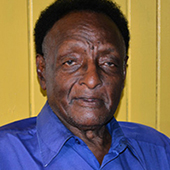Conviction set aside…new trial ordered

THE APPELLANT Alfred Kellman was charged and found guilty on a two- count indictment with having unlawful carnal knowledge of his two step- children, aged 9 and 11.
The children’s mother was not at home at the time but on her return some four hours later observed that Barbara was in a distressed condition and related this to the jury.
Each child was an eye witness to the offence involving the other and at the Assizes both gave sworn testimony implicating the appellant.
The medical evidence was of no help and there were no external signs of injury whatever to the children.
The trial judge did not however warn the jury that it was dangerous or unsafe to convict on either count on the uncorroborated evidence of children of tender years; he never used the word ‘warn’ or ‘caution’ or told them of any danger or risk in convicting if they did not find corroboration, although he did explain that corroboration was always looked for as a matter of practice even though it is not required as a matter of law in sexual cases.
The jury was however told that the independent eye-witness evidence of each child , if believed, was capable of amounting to corroboration, and that they could consider the offences as proved if they believed what the children said about the appellant .
On appeal, it was contended on behalf of the appellant that the cumulative effect of the judge’s directions did not amount to a sufficient warning to the jury, that it was unsafe to convict on either count on the uncorroborated evidence of children of tender years.
HELD:
(1) (per HAYNES, J.A.) That the jury was not in terms of effect warned, as they ought to have been, in a sexual offence on children of tender years; that they should be cautious before convicting the appellant on uncorroborated evidence . This prima facie would be fatal to the conviction unless there had been no substantial miscarriage of justice.
(2) That the crucial question was whether the State had in relation to each count such substantive corroboration apart from the evidence of the other child; that the court felt that if a proper warning had been given, a reasonable jury would inevitably convicted the appellant.
(3) (per curiam) That the only bit of evidence which could possibly be corroborative was that of the children’s mother, about one girl’s distressed condition but it was not entitled to much weight as it was not observed until some four hours after the alleged assault.
(4) (per curiam) That the conviction and sentence must be set aside and a new trial ordered.
Twenty-seven (27) cases were referred to.
C. B. Sheppard represented the appellant.
G.H.R. Jackman, Deputy Director of Public Prosecutions (ag.) for the State.
HAYNES, J.A. (delivered the first judgment at the request of Chancellor E. V. Luckhoo). The case for the prosecution was that on Saturday, January 15, 1972, between 12 noon and 1 pm, the appellant had had unlawful carnal knowledge of his two step daughters.
According to the evidence , each child was an eye-witness to the offence involving the other. The medical evidence was neutral. There were no external signs of injury whatever.
The appellant admitted that he was at home with the two step children between noon and 12.40 pm but he swore he did nothing to either of them during this time or at all.
Consequently, the State had to prove (1) that the sexual acts occurred; and (ii) that the appellant was the man involved. He was unrepresented by counsel and the jury found him guilty on both counts of the indictment.
Corroboration was not required as a matter of strict law, but it was obligatory on the trial judge as a matter of law to warn the jury in terms or effect, that in the eyes of the law it was dangerous or unsafe to convict on either count on the uncorroborated evidence of the two children for two reasons – firstly, because the charges were sexual offences and secondly as each girl was regarded by the common law as a child of tender years.
What he told the jury was as follows:
“In most cases members of the jury, corroboration is not required as a normal matter of course, but in sexual offences such as this, although corroboration is not required as a matter of law it is always looked for as a matter of practice.
“And it seems to me that if you accept the evidence of these two girls, their independent evidence as to what they saw in relation to each other may be considered as corroboration. Is there any better corroboration than the actual eye-witness to the crime?”
Conviction and sentence set aside. New trial



.jpg)











